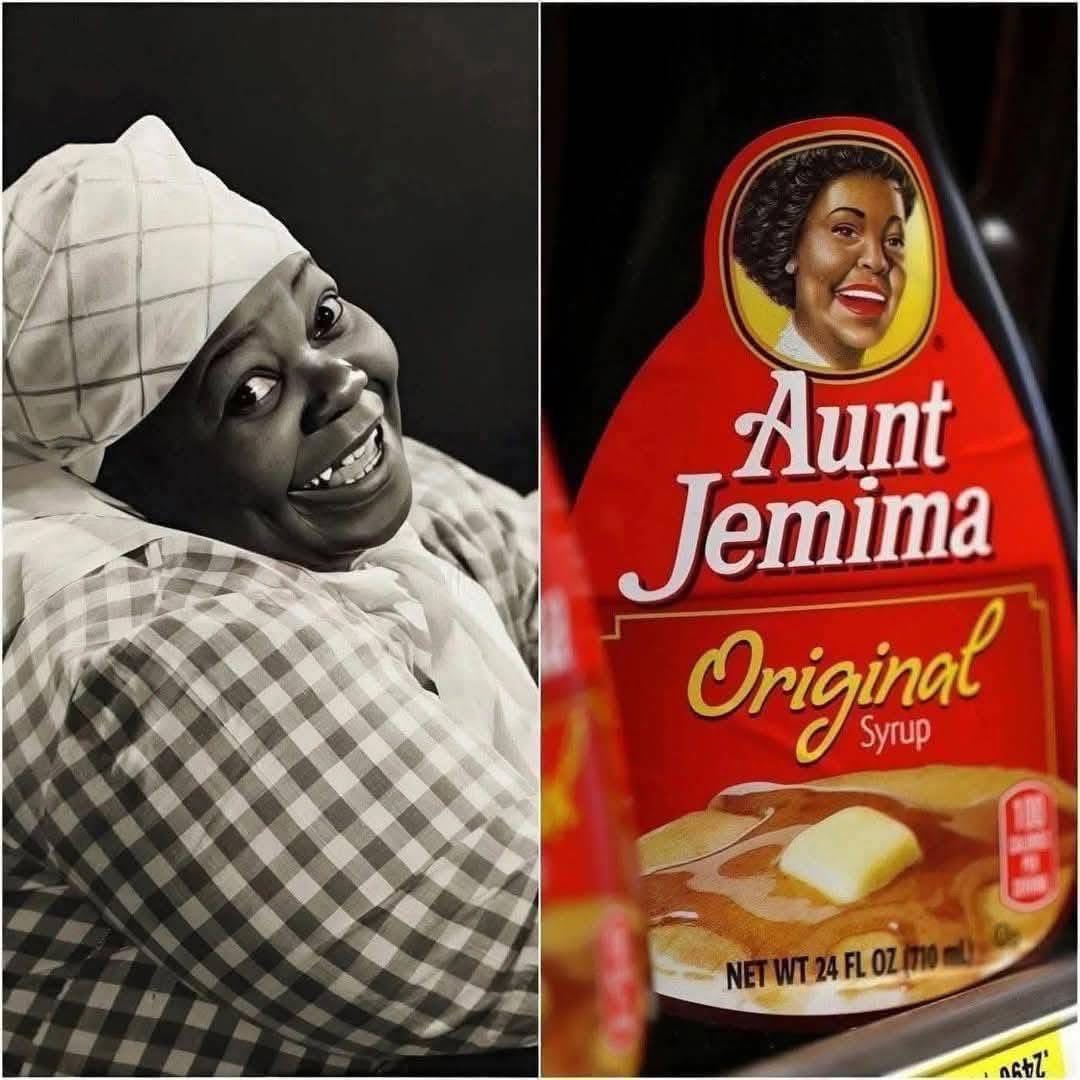The Legacy of Aunt Jemima: From Icon to Controversy and Beyond

Introduction
Few American food brands have stirred as much conversation, nostalgia, and controversy as Aunt Jemima. With her wide smile and checkered dress, the character became a symbol that resonated through generations of breakfast tables. But the legacy behind the brand tells a much deeper and more complex story rooted in racial stereotypes, representation, and cultural transformation. The image you’ve shared—seemingly a nostalgic juxtaposition of a real woman and the Aunt Jemima syrup bottle—evokes a flood of questions about identity, history, branding, and progress.
The Origins of Aunt Jemima
The Aunt Jemima brand was born in 1889, when Chris L. Rutt and Charles G. Underwood, two entrepreneurs from St. Joseph, Missouri, bought a pre-mixed, self-rising pancake flour and needed a marketing hook. Inspired by a minstrel show they had attended, they chose “Aunt Jemima” as their branding—a character played by white performers in blackface, portraying a jolly, subservient Southern mammy.
In 1890, the brand was acquired by the Davis Milling Company, which hired Nancy Green, a formerly enslaved woman, to portray Aunt Jemima at the World’s Columbian Exposition in Chicago. Green was a gifted storyteller and charismatic cook, and she became the first face of Aunt Jemima. She traveled the country performing live demonstrations, telling stories, and promoting the product.
A Character Built on Stereotype
The “mammy” archetype that Aunt Jemima embodied was deeply rooted in American slavery and post-Civil War culture. The character portrayed Black women as loyal, maternal, and happy in their servitude—a comforting figure for white Americans during Reconstruction and Jim Crow eras. It romanticized a racial past that was painful and dehumanizing.
Over time, the brand updated her image: shedding the headscarf, smoothing the wrinkles, and modernizing her attire. But critics argued that the core of the character—a remnant of a racist past—remained unchanged, no matter how polished the packaging.
Cultural Shifts and the Rise of Criticism
The civil rights movement of the 1960s and 1970s saw renewed scrutiny of racial representation in advertising. Scholars, activists, and the general public began to question the normalization of offensive stereotypes in branding. Aunt Jemima, along with other brands like Uncle Ben’s and the Washington Redskins, found themselves at the center of these debates.
In 2020, amid nationwide protests after the murder of George Floyd, PepsiCo (which had acquired Quaker Oats in 2001) announced it would retire the Aunt Jemima name and imagery, acknowledging its origins in racial stereotypes. By 2021, the brand officially became the Pearl Milling Company, named after the original mill where the pancake mix was first created.
Who Were the Women Behind the Face?
Several women portrayed Aunt Jemima over the years, including Nancy Green, Lillian Richard, Anna Robinson, and Edith Wilson. While these women were often proud of their work, they also faced limited opportunities and were forced to work within a racially constrained entertainment and marketing industry. Their stories are complicated—full of pride, pain, and the struggle for recognition in a system that commodified their identities.
The left side of the image you shared appears to represent one of these women, possibly Nancy Green, in promotional attire. The right side shows the Aunt Jemima bottle as it was prior to the 2021 rebranding.
The Controversy Around “Bringing Her Back”
Online rumors and memes sometimes suggest that Aunt Jemima is “back on the bottle” or that companies are secretly reverting to old branding. These claims are often inaccurate or satirical. As of 2025, there’s been no official reversal of the name or imagery by PepsiCo.
However, the emotional weight of the Aunt Jemima brand still resonates. Some feel nostalgia for the brand they grew up with, while others see the removal as a necessary act of justice and historical accountability. Both views reflect how deeply branding intersects with personal and cultural identity.
The Power of Branding and Cultural Symbols
Brands are more than just logos and packaging. They are symbols of shared experience, cultural values, and, in some cases, oppression or progress. Aunt Jemima’s story demonstrates how marketing can reinforce harmful narratives or evolve to reflect greater awareness.
It also raises important questions:
- Should we preserve historical icons, even if they are offensive, to remember our past?
- Is rebranding enough, or do companies owe deeper reckonings—such as reparations or education?
- How do we balance nostalgia with accountability?
Conclusion: A Legacy That Lives On
Whether remembered with fondness or viewed with critical eyes, Aunt Jemima’s legacy is undeniably powerful. It is a mirror to America’s racial past and present—both a cultural relic and a case study in corporate transformation.
The image of Aunt Jemima will likely remain etched in the national consciousness, not just as a syrup bottle but as a symbol of how far we’ve come—and how far we still have to go.
